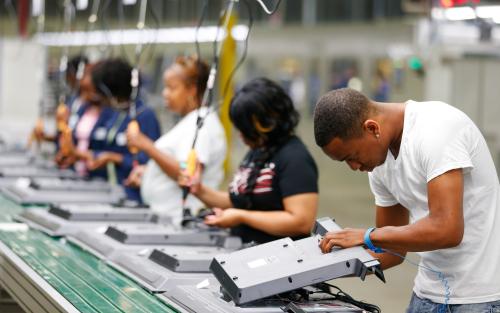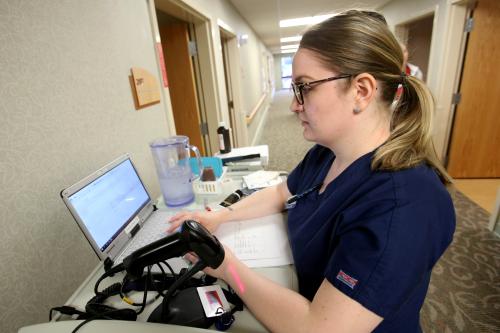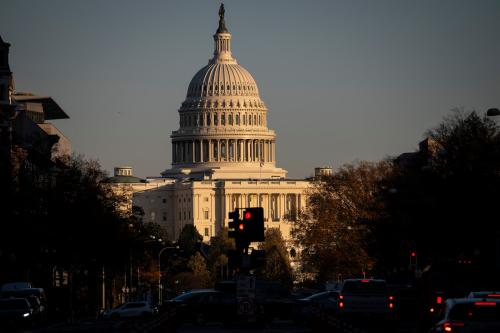When hiring an electrician, it’s important to be able to figure out whether the person knows what they’re doing. Selecting an amateur might send your house up in flames. When the electrician says he’s an expert, you don’t have to take his word for it. In the United States, a third party does the job of sorting out the charlatans from the pros. Like doctors and lawyers, electricians have to get a license from the government before they can work. That way, identifying qualified electricians need not involve letting a few houses go up in flames, and a person who buys or rents a house can have relative confidence that there are not hidden defects in the home’s wiring.
But many states require a license to legally perform a job where the risks of getting it wrong seem far less dire for potential consumers. For example, some states require that florists and make-up artists satisfy expensive and time-intensive requirements before they are legally permitted to perform their jobs. Also subject to such requirements in various states are locksmiths, ballroom dance instructors, hair braiders, manicurists, interior designers, and upholsterers.
This regulatory practice is known as “occupational licensing,” and it has spread to cover around 30 percent of the U.S. workforce, up from just 5 percent in the 1950s. The practice now has a significant bearing on workers of all skill levels, and extends far beyond the occupations of doctors, lawyers, nurses, and teachers.
It is important to realize that occupational licenses are not mere state-sponsored certificates to signal that workers have completed some level of training; occupational licensing laws forbid people from practicing in their occupation without meeting state requirements. If the rationale for licensing an electrician is to protect public safety, it is difficult to see what rationale supports licensing travel guides. Yet, twenty-one states require a license for travel guides. Among these, Nevada has created the highest hurdle: a person hoping to be a travel guide in that state must put in 733 days of training and shell out $1,500 for the license.
There can be an obvious disconnect between the strictness of licensing regulations and the potential harm to consumer safety. For example, Michigan requires 1,460 days of education and training to become an athletic trainer, but just 26 to be an emergency medical technician (EMT). In fact, across all states, interior designers, barbers, cosmetologists, and manicurists all face greater average licensing requirements than do EMTs.
An obvious burden of such practices falls on would-be workers looking to enter licensed occupations. The would-be travel guide who would like to give tours of Nevada’s Lake Mead may be discouraged from doing so due to onerous and expensive licensing requirements. This can have real consequences for job creation. By erecting a barrier to entry into an occupation, occupational licensing can slow job growth and limit employment opportunities. It can also make it harder for workers—including licensed ones—to relocate. Because requirements to obtain a license vary by state, a worker moving to a new state may need to undertake more education, training, or new examinations to work in the same occupation.
Occupational licensing can also be costly to consumers, who may pay as much as 15 percent more for services when an occupation is licensed, according to some estimates. These higher prices (and earnings of licensed practitioners) could result from licensing weeding out low-quality providers: as consumers come to perceive higher quality, they are willing to pay more, and prices rise. On the other hand, requiring extra training and qualifications may simply reflect a barrier to occupation entry that reduces market competition and allows the incumbent provider to collect profits. Given this possibility, it is perhaps not surprising that much of the push for new and expanded occupational licensing has come from occupational associations themselves, not the general public.
With such large potential consequences for worker opportunities and consumer prices, balancing the pros and cons of licensing would seem to be critical, but remarkably the status quo seldom takes such a careful approach.
Thoughtful reform of state occupational licensing practices should garner support from across the political spectrum. A call for evaluating the benefits and costs of widespread occupational licensing should appeal to those interested in expanding the employment prospects of low- and middle-income workers and keeping prices more affordable to low- and middle-income consumers. Simultaneously, the issue should draw interest from those committed to expanding economic opportunities by promoting entrepreneurship, the creation of small businesses, and giving individuals the ability to pursue their vocational interests.
To introduce ways to bring occupational licensing in line with its social costs and benefits, this month The Hamilton Project released a new paper by economist Morris Kleiner, Professor at the Humphrey School of Public Affairs at the University of Minnesota. In his paper, Dr. Kleiner offers a set of actionable, innovative proposals aimed at reforming the practice of occupational licensing in the United States. This paper, among others, will be discussed at a public Hamilton Project forum in March focused on expanding employment opportunities in the United States.
The Brookings Institution is committed to quality, independence, and impact.
We are supported by a diverse array of funders. In line with our values and policies, each Brookings publication represents the sole views of its author(s).






Commentary
Nearly 30 Percent of Workers in the U.S. Need a License to Perform Their Job: It Is Time to Examine Occupational Licensing Practices
January 27, 2015